Here is a student hub live event where I got to chat with the friends of mine about what it is like for students studying in prison and how we support them.
Probably my most emotional SHL event.
Here is a student hub live event where I got to chat with the friends of mine about what it is like for students studying in prison and how we support them.
Probably my most emotional SHL event.
During the pandemic and lockdown the open University was extremely flexible regarding extensions for students. Now that all lockdown restrictions have been removed the original arrangements for extensions are now in place again.
This information is available via the help centre and student guidance at:
https://help.open.ac.uk/extension-to-assignment-deadline
This is the standard process that I will be applying to all extensions on all modules.
Please check the flowchart against your reason for requesting an extension. Do not be surprised if you are asked to provide supporting evidence for longer extensions.
This flowchart summarises the process:
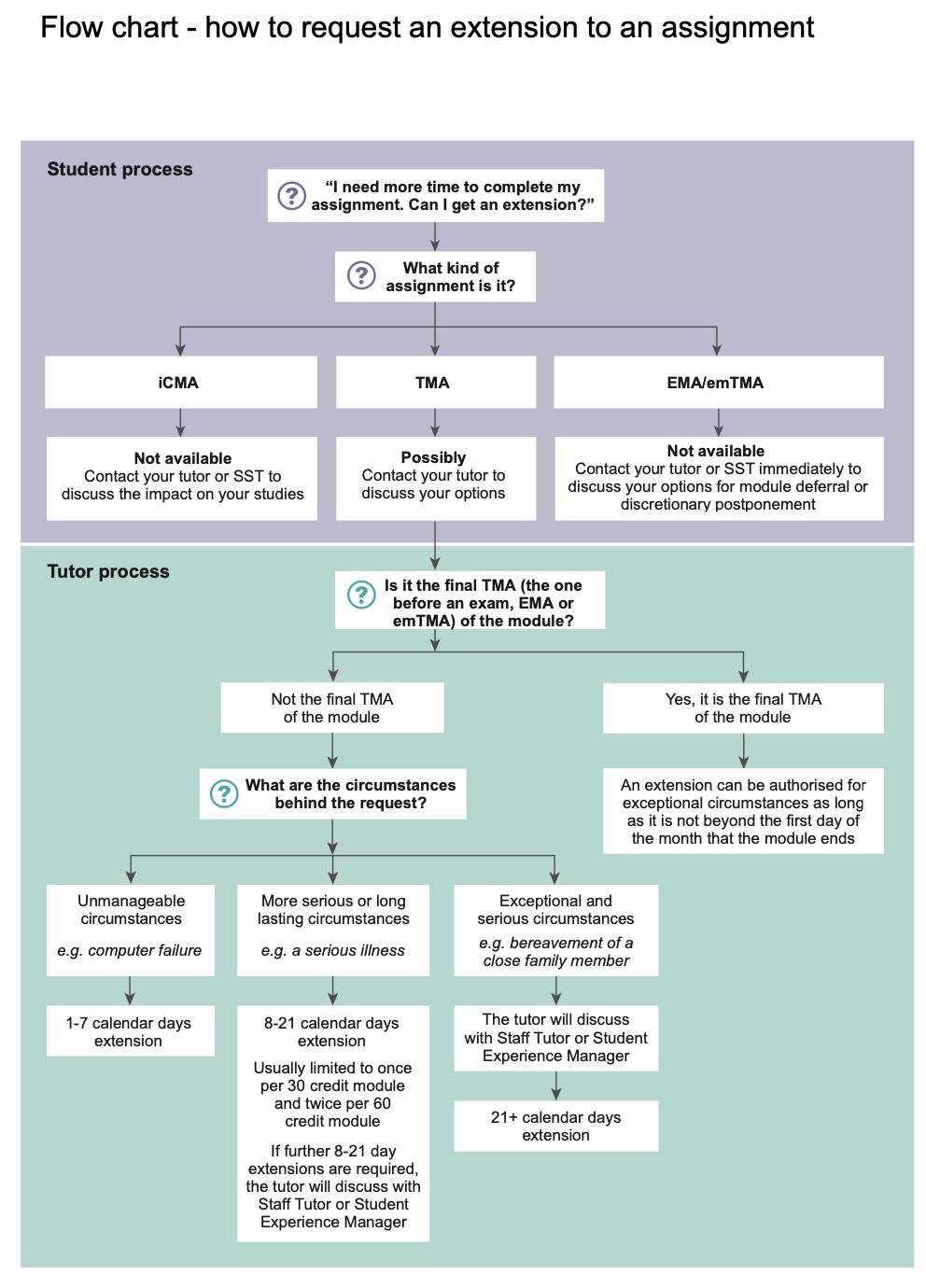
As some of you may know, I am a presenter on Student Hub Live. This month they are letting me loose with guests.
Here is a link to the recording where I talked to fellow tutors about how to use other peoples ideas in our academic work:
Expectations of students as they move from level to level
As you work your way through your undergraduate business and management degree, you will experience three separate levels.
Each level is approximately equivalent to a year’s study as a traditional campus university.
Each level builds upon the preceding level and in increases in complexity.
Students often struggle when they move from level 1 to level to and from level 2 to level three.
Understanding the different requirements and expectations is useful in making these changes.
To help make these expectations clearer we will explore learning outcomes at the three different levels.

The following learning outcome examples have been taken from the following modules:
· B100 An introduction to business and management
· B207 Shaping Business Opportunities
· B327 Creating futures: sustainable enterprise and innovation
Learning outcomes have been slightly simplified and modules specific tasks have been removed. The idea is that this will give you a sense of the range of knowledge and understanding you are expected to gain and skills you are expected to demonstrate that each level.
The following table demonstrates how the knowledge, understanding and skills gained at a level of then utilised and developed further by the next level.
Level 1 B100 An introduction to business and management
Learning outcomes
Knowledge and understanding:
· the nature of businesses and other organisations, including organisational structure, culture and values
· the principles of the main business functions (human resource management, accounting and finance, and marketing)
· the external environment in which the business operates, including the economic and political context at national and global levels
· the principles of business ethics and the main social and environmental issues faced by businesses and other organisations
Skills:
· selecting and analysing information relevant to a particular problem or issue related to business and management
· applying theories, models and concepts to practical situations
· framing and addressing questions in relation to business and management
· using academic and business and management language appropriately and effectively
· interpreting, using and presenting numerical information effectively and appropriately
Level 2 B207 Shaping Business Opportunities
Knowledge and understanding:
· Develop knowledge and critical understanding of the theories, concepts and models of different business functions.
· Develop a critical appreciation of the interactions between business functions and the integrative complexity that shapes business innovation.
· Develop a critical understanding of why new products and services are imperative to contemporary business practice.
· Develop knowledge and understanding of external issues affecting the successful running of organisations, including how they compete in a global context.
· Develop knowledge and understanding of the elements required to build long-term success in organisations, and how students can contribute to the fostering of long-term value creation.
Skills:
· Evaluate and compare competing perspectives, theoretical models and concepts in the context of practical situations.
· Select and critically analyse information relevant to a particular problem or issue related to business and management.
· Gather and synthesise material from a variety of sources in constructing arguments applied to business and management.
· Compare critically and use different approaches to issues and problems within business management.
· Engage in critical reflection.
· Consolidate an understanding of academic language and literacy practices in order to effectively engage with the academic knowledge and skills of Level 2 study.
· Search for and use relevant digital and non-digital information from sources other than the module materials.
· Communicate in a professional manner in written work, face to face and online.
· Plan, monitor and review progress as an independent learner, including a focus on personal skills development.
· Develop an awareness of ethical issues and professional standards relevant to business and management.
Level 3 B327 Creating futures: sustainable enterprise and innovation
Knowledge and understanding:
· Create and manage sustainable forms of innovative and entrepreneurial ventures within a range of specialist areas, such as Engineering, science and information technology; Creative, leisure and cultural industries; Health and social care.
· Research entrepreneurship and innovations within a specialist real world setting, recognising that specialist areas have to be explored at multiple levels of analysis.
· Apply core theories, concepts and frameworks of innovation and entrepreneurship to understand the strategy, process and operations of enterprises at different stages of their life cycle.
· Discuss the impact of innovation and entrepreneurship on society, both at a conceptual and a practical level, including ethics and sustainability, economic and social benefits to you, the economy and local communities.
Skills:
· Differentiate the distinctive roles played by start-ups and established enterprises in the process of developing and commercializing various forms of innovations.
· Distinguish the responsibilities of founders, managers, employees and directors within particular types of sustainable enterprises and innovations, including roles and rewards.
· Use concepts from enterprise and innovation to critically analyse and evaluate solutions to a variety of societal challenges.
· Select and apply conceptual thinking for the process of enterprise development.
· Critically analyse and design competitive and sustainable strategies for developing and introducing innovations into particular markets.
· Negotiating, influencing, and agreeing roles and rewards within founder teams in entrepreneurial settings, doing so in a legitimate ethical manner.
· Appropriately plan and solve problems in entrepreneurial and innovative settings.
· Work independently and as part of a collaborative virtual team to develop attributes and capabilities for entrepreneurial success in a complex and changing environment.
· Undertake independent research to inform practice within your area of specialism.
· Critically evaluate and reflect on your own career development objectives.
In the following table, learning outcomes have been slightly simplified and modules specific tasks have been removed.
This will give you a sense of the range of knowledge and understanding you are expected to gain and skills you are expected to demonstrate that each level.
The table demonstrates how the knowledge, understanding and skills gained at a level of then utilised and developed further by the next level.
In the section on differences in assessment, you will see how the progression in learning outcomes are reflected in the assessment practices, particularly when it comes to marks being awarded.
|
|
Level 1 examples (B100) |
Level 2 examples (B207) |
Level 3 examples (B327) |
|
Knowledge |
the nature of……… |
of the theories, concepts and models….. |
create and manage sustainable forms of….. |
|
the principles of…… |
a critical appreciation of the interactions between……. |
research within a specialist real world setting, recognising that specialist areas have to be explored at multiple levels of analysis |
|
|
the external environment of …… |
external issues…….. |
Apply core theories, concepts and frameworks to understand the strategy, process and operations of…… |
|
|
|
the elements required to build……… |
discuss the impact on society, both at a conceptual and a practical level |
|
|
Skills |
selecting and analysing information relevant |
Evaluate and compare competing perspectives, theoretical models and concepts |
Differentiate the distinctive roles played by…… |
|
applying theories, models and concepts to practical situations
|
Select and critically analyse information relevant to a particular problem |
Distinguish the responsibilities of…. |
|
|
framing and addressing questions |
Gather and synthesise material from a variety of sources in constructing arguments |
Use concepts to critically analyse and evaluate solutions to a variety of societal challenges… |
|
|
using academic and business and management language appropriately and effectively |
Compare critically and use different approaches to issues and problems |
Select and apply conceptual thinking for the process of |
|
|
interpreting, using and presenting |
Engage in critical reflection
|
Critically analyse and design competitive and sustainable strategies for developing and introducing……. |
|
|
|
Consolidate an understanding of academic language and literacy practices |
Negotiating, influencing, and agreeing roles and rewards within founder teams… |
|
|
|
Search for and use relevant digital and non-digital information from sources other than the module materials |
Appropriately plan and solve problems |
|
|
|
Communicate in a professional manner in written work, face to face and online |
Work independently and as part of a collaborative virtual team to develop attributes and capabilities |
|
|
|
Develop an awareness of ethical issues and professional standards |
Undertake independent research to inform practice within your area of specialism |
|
|
|
Plan, monitor and review progress as an independent learner |
Critically evaluate and reflect on your own career development objectives. |
At the start of your university study there are some basic skills and knowledge you need to gain in order to progress. As you move from one level to the next there is the assumption that certain skills and knowledge have been gained and are available to use in the next level.
To explain this in a little more detail we will look at a model developed by Benjamin Bloom in 1956.
This is often referred to as “Bloom’s taxonomy” (taxonomy means “classification”). Blue suggested that there are a range of educational objectives that should be met. There are arranged in order of complexity. In this discussion we will use a slightly adapted version of the model.
The most basic level we look at is “remembering” and that goes all the way up to “creating”. In the following discussion we shall have the three levels of the undergraduate business of management degree broadly fit onto this taxonomy.
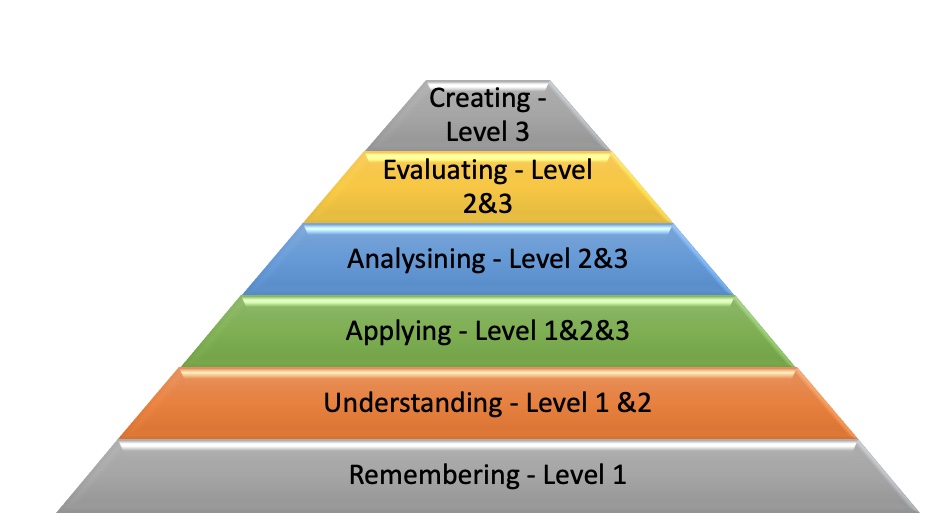
Bloom’s Taxonomy applied to study levels
Based on Anderson and Krathwohl’s adaptation of Bloom’s Taxonomy cited in (OU nd)
OU, (nd) Open Learn ‘Facilitating learning in practice’ Week 3 4.1 Bloom’s Domains [Available online] https://www.open.edu/openlearn/ocw/mod/oucontent/view.php?id=20108§ion=4.1
Accessed 25/08/2019
|
Remembering: Recall or retrieve previous learned information. |
Level 1 - you learn and remember a range of essential basic principles and ideas that are presented to you. |
|---|---|
|
Understanding: Comprehending the meaning, translation, interpolation and interpretation of instructions and problems. State a problem in one's own words. |
Level 1 - you begin to interpret some of the basic ideas and concepts. Ready to develop your understanding further in level 2.
Level 2 - you begin to restate and explain the ideas more in your own words. These ideas are taken further in level 3.
|
|
Applying: Uses a concept in a new situation or unprompted use of an abstraction. Applies what was learned in the classroom into novel situations in the workplace. |
Level 1 - you get to try out the models in basic case studies with fairly clear boundaries and guidance.
Level 2 – your application of the models and concepts is taken further with looser boundaries and more personal choice.
Level 3 – you are expected to apply models critically, justifying your choices. The guidance is much looser and the boundaries much broader. |
|
Analysing: Separates material or concepts into component parts so that its organisational structure may be understood. Distinguishes between facts and inferences. |
Level 2 – you are analysing situations, issues and problems using models you have learned. You are expected to present recommendations and solutions based on your analysis. At level 2 you are expected to discuss any strengths, weaknesses and limitations of the analysis.
Level 3 – your analysis will be chosen to be appropriate for the problem, issue or argument being made. Any recommendations or conclusions presented will be fully justified and considered from multiple perspectives. |
|
Evaluating: Makes judgements about the value of ideas or materials. |
Level 2 - as part of your analysis you will be making judgements as to the value of the models, concepts and theories being used along with the information being included. You will be considering the validity of your sources.
Level 3 - the validity of models and frameworks will be considered as part of your analysis. You may well combine models to form new models. The use of models will be adapted to suit the purpose and the value added to the argument or conclusion will be considered. |
|
Creating: Builds a structure or pattern from diverse elements. Puts parts together to form a whole, with emphasis on creating a new meaning or structure. |
Level 3 – Through the formative assessment process you are expected to create new and personal outcomes. Much of the focus on level three is the creation of new solutions to problems. |
We have some fantastic tutors working at the open University and they produce some great resources. Here is the presentation created by one of my colleagues Marcus Sangster.
It looks at some of the essentials required in a business report that you might create for the module assignment.









What is critical thinking?
To think critically is to examine ideas and weigh them up them against what you already know. You need to be able to consider different viewpoints and reach a logical conclusion. The aim of critical thinking is to be objective. When you think critically, you weigh up all sides of an argument and evaluate its strengths and weaknesses. So, critical thinking skills entail:
You need an open mind and to be prepared to question the author’s claims. How you do this and the questions you ask will vary depending on what – and why – you are reading (for example, you might be responding to an assignment question).
The reason critical thinking is a skill - and not just an automatic thought process - is because most people think “uncritically,” and make decisions based on personal biases, self-interest, or irrational emotions.
Listen to Robert Craw discussion critical thinking.These contributions are from my colleagues Robert Craw and Nicky Mee
As open University students you are expected to do a lot of independent study on your own. But we know this can be quite hard and we know it is challenging. There is an option for you to get involved a little more and to see some broader aspects of university life.
Introducing student hub live.
Student hub live is a series of live events carried out from the Milton Keynes campus that you can watch or take part in live or can catch up on later. The sessions are run by experienced (if slightly mad) lecturers and staff aimed at helping you feel more part of the community.
So if you want to find out about different modules or different ways of approaching your study.
Or if you want to find out more about study skills and developing your own practice, this is the place to go.
http://studenthublive.open.ac.uk/
And you might even bump into me on one of the sessions. (Not sure if that encourages you or put you off?)
Often tutors are asked how to create a TMA that will score high marks.
We always tell students to plan their TMA before they write it, but often the way the plan is turned into the TMA leads to a poorly balanced assignment that misses key points.
Here is some advice to help with this:







So many models that you can use to help you reflect critically. The one that I like particularly is commonly referred to as the “what-so what-now what“ model.
Have a look at this open learn page for a little bit more on this model:
A key thing is that it combines your experience with your reflections on that experience and what you have learned from the experience.
In looking through some of the material on this I came across the following YouTube video which sums is this all up very nicely.
The following video talks through the document that is also attached here.
The video includes subtitles if required.

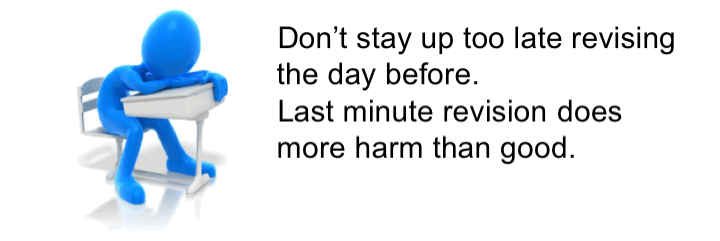




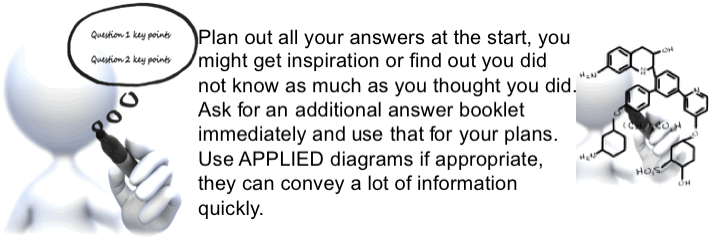
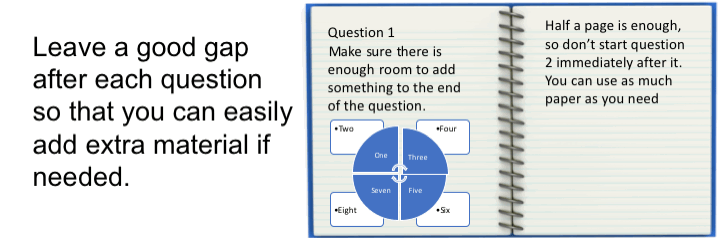









Benefits of Office 365
Distance learning is a fantastic way to study, it is flexible and adaptable, but it can sometimes be lonely, and you might feel isolated. Working with other students in the same position and with a range of views and ideas is a great way to beat this and at the same time develop specific digital skills in remote team working.
To help with this the OU has provided all students with a Microsoft Office 365 account (education edition) and access to the secure system where documents can be shared without sharing personal information (you only use your name and given OU Email address).
You do not need to request the Office 365 account, it is already there. It is activated by you resetting your main OU password on Student Home.
For details on how to access Office 365 for the first time have a look at my other Blog at: https://learn1.open.ac.uk/mod/oublog/viewpost.php?post=217339
This Blog is about what to do when you get there.
First log into office at www.office.com/portal (you might need to sign out of any work account for Office 365 at this point)
Sign in using your OU Email address (OUCU@ou.ac.uk for students and OUCU@open.ac.uk for staff) and your usual OU Password.
Then you get access to the Apps:
Once signed in you can access upload items to your online storage, start new documents or use any links you are sent by way of invites or message forums.
Using Documents Simultaneously
First let me emphasise patience. The documents are being saved in real time and multiple people adding items, particularly images. to the documents uses processing power. Don’t get ‘click happy’ allow time for your changes to appear, there is a slight lag when multiple people are working together.
When you are in the document you will be able to see if anyone else is also reading or editing the document at the same time.
Because you are logged into the OU Office 365 the system recognises you but only uses your OU Email address, no other personal information.
At the top of the screen you get a notification of whether or not other people are working on the document, you can click on the drop down menu to see a list.
Each of the office programmes shows multiple users in different ways appropriate to the programme.
Here are examples of what this looks like in the three main programs.
PowerPoint
You can see which slides other people are on by the little coloured flag icon, hovering over the flag gives you the person’s name as registered with their account. You also see he flag shown on the specific element on the slide the person is working on.
In WORD you see the individuals name and flag at the point the cursor is resting at in the document.
In Excel, you can see the cell or cells the other individuals have clicked on.
Working Offline
The online versions of the programmes are really useful, but are slightly limited in functionality and you cannot do everything in the online version of the programmes that you can do in the desktop versions (by the way your OU Office 365 account lets you download the desktop versions of the software to use offline as well).
The shared documents give you the option to edit them in the offline (desktop) versions of the programmes. This is useful if you want to use the more advanced features. There is an ‘autosave’ feature which automatically saves your edits to the shared version. However this should be only used sparingly.
Multiple people editing the same document offline simultaneously can have strange results and other users can be locked out of the document during editing.
If you created the file or have access to the folder the file sits in, then you can easily see who has read it and who has edited it.
Select the file and click ‘Version History’ this tells you who has edited the document and when. You can also download a previous version of the document.
Similarly you can select the file and hover the mouse over the document to see how many times it has been read and the viewers names.
A word of caution
When working with colleagues in a face to face session, you can discuss changes and alterations to your groups’ outputs. It very rarely leads to major arguments because you are present and able to see what is happening.
When working on shared documents remotely you do not get the same level of instant feedback and understanding of the situation. This can lead to individuals feeling annoyed or excluded.
We definitely want you to develop and modify one another’s work but to do it in a way in which you are considering the reaction of your colleagues.
Do they know what you have changed and why, or have they just seen two hours of their work deleted with no explanation? Communication is key, live classroom sessions work well alongside this where you can discuss the alterations or perhaps a message with a summary of the changes made and why.
Conversely, if someone has altered your contribution and you are not sure why, don’t immediately become defensive. Find out the reasons for the change and discuss it. You will not always find you agree but agreeing to disagree is better than taking offence.
Next Steps
All you need now is something to say and a group to say it with.
If you wanted to try a shared document then here is a link to a PowerPoint I created for you to play with. It is available only to members of the OU (staff or students) there are lots of places in the presentation where you can comment or add something to the presentation.
Go ahead, have a go.
Rob
In many courses with the Open University you are asked to understate some sort of project or investigation. Many of these have something called a “cycle of inquiry” which is basically the process you go through in order to get something.
Students often come back to me and ask me how to discuss cycles of inquiry. This blog is essentially the advice I have been giving for the last seven years on how to explain and describe these cycles. This is my own personal model that I have shared with my students and if you want to use this approach then please cite this blog as your source.
What is a cycle of inquiry?
First of all a cycle of inquiry is a definite pro-active action that you initiate. It is not just you reacting to something. You may well need to react to something that happened but your reaction should lead to you taking some deliberate action. So any event might lead to a cycle of inquiry but your immediate reaction to an event is not necessarily a cycle of inquiry.
Second, a cycle of inquiry should always be undertaken to get something. That “something” could be tangible such as resources or money or labour. Or it could be something less tangible such as inspiration or confirmation or permission. The point is that any cycle of inquiry must have some sort of an outcome that you can measure.
Third, a cycle of inquiry should not be too big. “Build a new hospital” is not a cycle of inquiry. It is a project. Projects tend to be made up of lots and lots of cycles of inquiry.
In this example, suitable cycles of inquiry would be to “find out how many people live in the area” and “identify how many hospitals already exist in the area”.
Describing cycles of inquiry in a TMA.
When describing a cycle of inquiry it is quite possible that you can describe it without using any theory at all and without providing any substantive evidence. This is fine for a general conversation but if you are describing a cycle of inquiry for an assignment then you must include both theory and evidence. If your chosen cycle of inquiry does not include both of these things or is very limited then choose another cycle to describe.
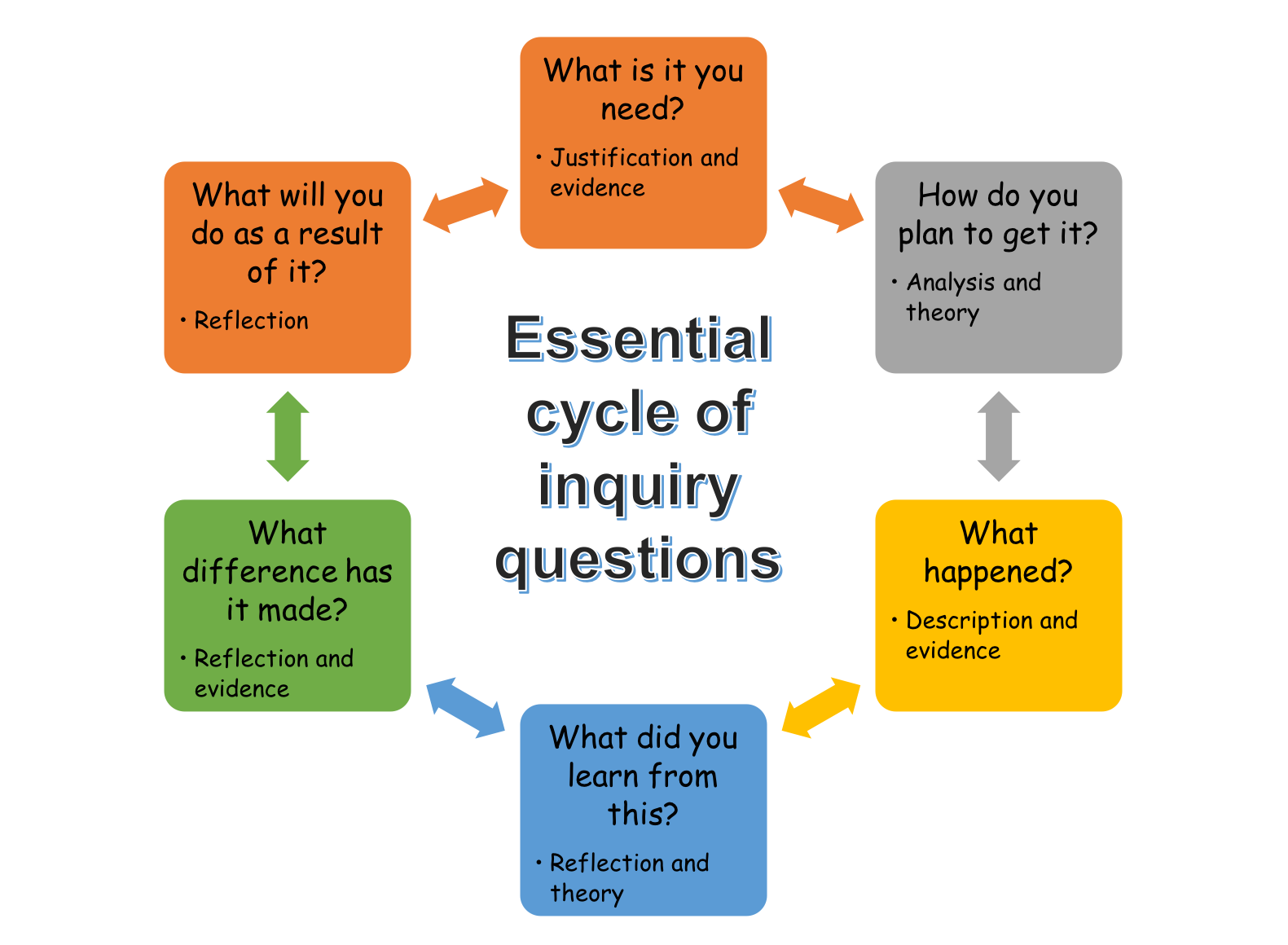
Key questions to ask as part of a cycle of inquiry
What is it you need?
The answer to this question should indicate why the thing you need is important to the initiative or project you were talking about. There should be some evidence here and some discussion on how you expect this thing to change your situation.
How do you plan to get it?
When answering this question, you should consider any theories you have used or are using in the cycle of inquiry. There might be some stakeholder analysis also power theories as you identify the people to engage with. There might be theories on communication or maybe you’re using some creative problem-solving techniques. This is where you get the theory into your answer and possibly some application as well.
What happened?
This question let you provide some evidence to show what happened when you carried out the cycle of inquiry.
What did you learn from this?
Here we want you to think about how it went. Did everything work as you expected it to? If not why not? Did you get the results you expected? If not why not?
What difference has it made?
If everything went as you expected it to then the answer to this question is “take the next step” however it is rarely that simple. Often things happen you didn’t expect and things have changed as a result of your cycle of inquiry. It might be that the cycle failed and you need to try again so what has changed is your understanding of what works. Every real cycle of inquiry will ultimately make a difference of some sort.
What will you do as a result of it?
So what are your next steps? It might be you have to repeat the cycle of inquiry with different people with a different approach or maybe you’re going onto the next stage or maybe you’ve gone in a different direction so what are you going to do now that you’ve completed this cycle of inquiry. There is always something else to do, even if it is just “celebrate success.
In your studies you are often asked to develop an argument or a critical argument, but what do we mean by that?
The first thing we want is a clear statement of what it is you are arguing. What is it you are going to demonstrate or prove in the discussion.
Then we want you to prove it using examples and applied concepts as evidence. This is not just presenting the evidence or models, it is much more. It is an explanation of how the models and evidence support the point or the argument you are making. With critical argument we are looking for you to also discuss evidence that might contradict your point and explain why you still feel your point is valid. You may even include some discussion on the weaknesses of the concepts you are using.
In short, we want you to clearly state your argument and then show what that is based on.
Too often students just give the tutor some well applied models and concepts, but the tutor has no idea what point they are making or how the concepts link to them.
Tutors can usually guess what the link is, but we can only give marks for what you tell us, so if you don’t explicitly state it, you won’t get marks for it.


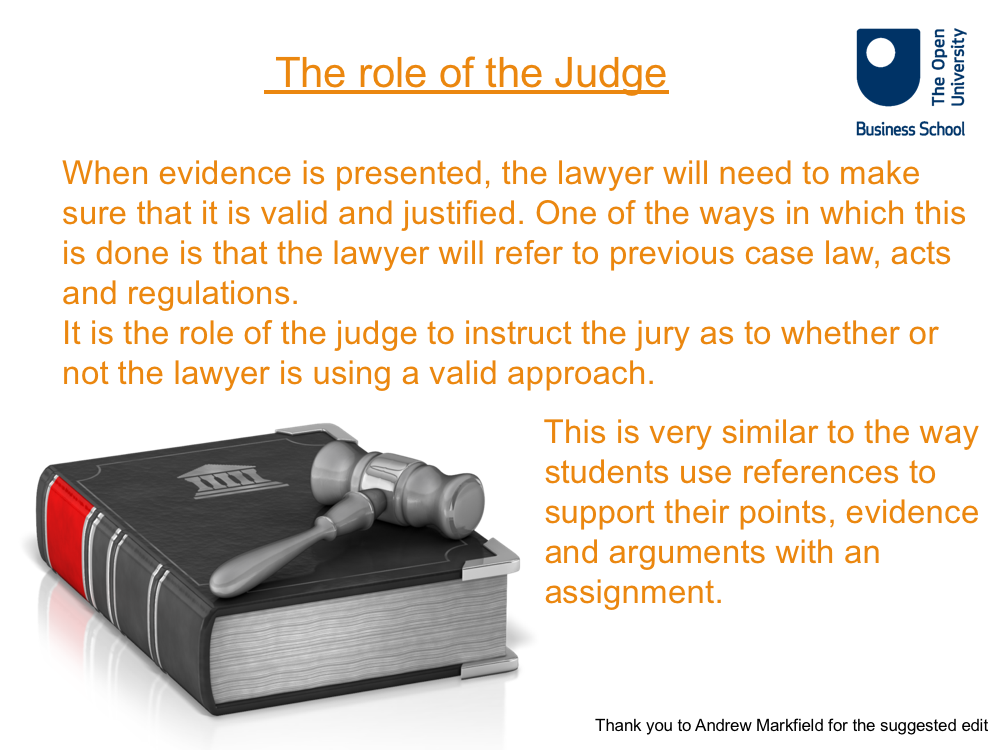

Some OU documents and streamed content from tutors is stored on the OU Shared drive. This is only accessible to active OU users. In order to access some documents or recordings you will need an active OU Office 365 account.
This blog explains the process:
FIRST: The Help Centre advice is really good, you will find it at: https://help.open.ac.uk/microsoft-office-365
Microsoft Office 365 is optional and freely available for current registered students for the duration of their studies. The account is already set up whether or not you have used it.
Your account will include:
If you already have Office 365 from a personal or work account then you will have to sign out and sign in with your OU account since access is limited to member of the OU community. We are using the OU Sharepoint which prevents access from outside the OU community. To sign out simply type www.office.com into your browser, right click on your profile icon (top right) and choose 'sign out'.
You have been allocated an account, even if you have never requested one. The account is activated by you resetting your password on the Welcome Screen on student home.
You may have received an email prompting you to change your password to be able to access Office 365. Once you've changed your password, you'll need to wait for up to 24 hours for your access to be set up.
NB. When you change your password you should do it from within student home.
If you haven’t received an email from the OU or can't find it, to get access to Office 365 you’ll need to sign in at portal.office.com.
Your sign in details will be
If you've forgotten your OUCU, you'll find it on your profile page in Contact details.
If you're still having trouble signing in to Office 365, contact the Computing Helpdesk.
It can take 24 hours for the account to be activated.
Your academic email address will also be OUCU@ou.ac.uk. You’ll need to use this email address to sign up for student discounts. To view any emails you’ve used this email address for, you’ll need to sign in to Office 365.
The OU sends emails to your preferred email address. You can check what this is by visiting your profile page in StudentHome. You should check your preferred email mailbox at least a couple of times a week for important communications we may send you.
TIP! You might wish to keep study emails and personal emails separate, in which case you could use Outlook in Office 365 (already set up with your OU email address) and then change your preferred email on your profile page. You can always add this account to your usual email programme, but you never have to give out your personal email.
Rob
https://learn1.open.ac.uk/mod/oucontent/view.php?id=6577
You could try the Introductory Quiz
https://learn1.open.ac.uk/mod/quiz/view.php?id=6601
Or even the advanced quiz.
https://learn1.open.ac.uk/mod/quiz/view.php?id=6602
You can always work through the practical examples in my presentation on this link:
Let's see how you get on.
Rob
This blog might contain posts that are only visible to logged-in users, or where only logged-in users can comment. If you have an account on the system, please log in for full access.